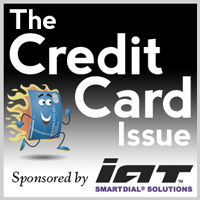The debt settlement industry came into its own in 2000, and has grown to over 2,000 companies in 10 years. In the current economic environment, more consumers are having to juggle greater debt loads over several platforms – primarily credit cards.
Tighter regulations on Chapter 7 bankruptcy, thanks to legislation passed in 2005, is another stressor on many consumers. Chapter 7 was once a much easier way to discharge almost all consumer debt without necessarily having to repay them; now, most who apply for Chapter 7 protection end up shuffled over to Chapter 13 bankruptcy, where payments are still expected.
 Teresa Dodson, Managing Partner/Chief Operating Officer of Persolvo Data Systems, put together an outline for insideARM.com’s Big Issue: Credit Card section that looks at the ways debt settlement companies are operating in the industry.
Teresa Dodson, Managing Partner/Chief Operating Officer of Persolvo Data Systems, put together an outline for insideARM.com’s Big Issue: Credit Card section that looks at the ways debt settlement companies are operating in the industry.
Background and History
- Largest 200 make up 80% of all enrolled clients
- Perceived negatively by banks because they charged up-front fees
- As much as 20% of gross charge-off in 2008-2010 enrolled in DS programs
- Industry became regulated by the FTC as of October 2010 under the revised telemarketing sales rule
- Companies can no longer charge upfront fees and must adhere to strict marketing guidelines (attorneys excluded)
Characteristics of a Debt Settlement Client
- Motivated, pro-active, want to pay, but need more flexible, long term settlements not offered by many issuers.
- Have an average of $35,000 of debt on 6-8 cards
- Experienced sudden displacement (loss of job, loss of total household income, disability, etc.)
- Can’t qualify for credit counseling due to lack of income
- Many qualify for bankruptcy but desperately want to avoid this option
- Have tried to negotiate early in the delinquency cycle (60, 90, 120 days) unsuccessfully
- Growing segment of over 65 consumers
- Mostly 35-50 yrs of age
- 95% enroll pre-charge-off or with 90 days past due
- Most roll straight-line to charge-off once enrolled
“Ability to Pay” and “Willingness to Pay”
- These debtors are the dream debtor for collectors. They have the highest motivation to pay
- Cannot pay in full
- They have a high willingness to pay, but low ability to pay
- Wallet share is spread across 6-8 cards
- They have stopped making payments on all cards in order to fund trust account savings balances
- They are highly focused on the goal of acquiring savings to settle debts and are monitored and coached by their debt settlement company to achieve their savings goals.
- Average consumer is funding $400-$600 monthly in savings account in order to build a settlement fund
- Not concerned about credit score because the damage has been done
- Not concerned about lawsuits much because they want the account to move out of the issuer’s portfolio into the secondary market where settlement is more likely
- Bankruptcy avoidance is primary motivation
Optimize Collection Work Queues
- Debt Settlement accounts skew typical analytical models
- DS consumers don’t open the mail and don’t answer the phone
- These actions by collectors are wasted money in an attempt to get the DS consumer to behave in a way they are educated not to behave
- Identifying these consumers in collection files very early upstream can reduce collection costs in these areas
- Knowing most DS consumer will roll straight-line to charge-off, identifying the DS consumer upstream earlier in the process creates an opportunity to settle the account pre-charge-off and reduce credit loss impact as well as reducing mailing cost, dialer costs and wasted effort in the collection queue
Indirect Costs Associated with Debt Settlement Accounts and the Cost Impact to Liquidation Rates
- Scrubbing for DS accounts and segmenting the file prior to skip tracing, analytical scoring, dunning and dialer activity can significantly reduce cost and yield higher productivity by utilizing self-serve, channels to offer settlements via the web as opposed to high cost personnel not likely to reach the consumer or get effective results on the phone or via mail campaigns
- Increased Liquidation Rates and Shorter Liquidation Curves vs. Legal Recovery Model
- Legal Recovery net liquidation rates over a 5-7 year liquidation curve equates to 6.8 cents to 7.3 cents on NPV basis
- Typical account in a debt settlement program settles at 38-45%, 3-6 month term
- Lower balances have higher yield and shorter term
- Higher balances have lower yield and longer term
- Break rates typically only run 3-6% based on balance and length of term compared to 18-22% in typical collection portfolio term settlements (again, motivated consumers are motivated to complete a settlement)
- Typical cost of collections for internal legal recovery strategy is 45-50%
- Reputational risk to creditors for suing large numbers of consumers
- Many buyers and agencies are seeing conversion rates on DS campaigns as high as 27% or more, much higher than a typical 18-20% liquidation rate of a file over 18-24 months
Maximize Asset Sale Yields
- DS has been adopted across the secondary market in a broad way (buyers, agencies, legal recovery)
- Many issuers work to identify DS accounts early in the delinquency cycle and then simply send to legal, the highest cost recover channel, thereby significantly limiting the net recoveries in this strategy
- Many times portfolio sales will net more than a similar portfolio worked through legal recovery on a NPV basis
- Issuers who leverage the DS consumer early, typically are able to settle some portion in pre-charge-off in house at the lowest cost of collection
- Once the account charges off, Issuers focusing on debt settlement, avoid placing lucrative DS accounts with thirds party agencies that would otherwise result in high contingency fees for accounts successfully settled
- Segmenting accounts early and working internally yields the maximum recovery possible at the lowest cost
- After 6-9 months of working to settle DS account internally, accounts can be sold to buyers focused on this account segment at the highest yield
- At this point, the maximum recovery has been recognized, and buyers with specialized expertise in this area can further benefit and are willing to hold accounts longer than an issuer would be willing to hold and work the account
- Issuers should explore revenue share agreements with buyers to participate in liquidation profits from portfolios based on forward flow agreements. Many buyers focusing on this asset segment are willing to offer revenue sharing agreements on portfolios of DS accounts given the ability to scrub inventory for forward flow agreements. This ensures the issuer retains the maximum value for the file regardless of market pricing conditions
Teresa Dodson serves as Managing Partner/Chief Operating Officer of Persolvo Data Systems. Persolvo Data Systems has been successful at automating the settlement process between debt settlement companies and Creditors, Collectors and Debt Buyers.





![the word regulation in a stylized dictionary [Image by creator from ]](/media/images/Credit_Report_Disputes.max-80x80.png)


![[Image by creator from ]](/media/images/New_site_WPWebinar_covers_800_x_800_px.max-80x80.png)
![[Image by creator from ]](/media/images/Finvi_Tech_Trends_Whitepaper.max-80x80.png)
![[Image by creator from ]](/media/images/Collections_Staffing_Full_Cover_Thumbnail.max-80x80.jpg)
![Report cover reads One Conversation Multiple Channels AI-powered Multichannel Outreach from Skit.ai [Image by creator from ]](/media/images/Skit.ai_Landing_Page__Whitepaper_.max-80x80.png)
![Report cover reads Bad Debt Rising New ebook Finvi [Image by creator from ]](/media/images/Finvi_Bad_Debt_Rising_WP.max-80x80.png)
![Report cover reads Seizing the Opportunity in Uncertain Times: The Third-Party Collections Industry in 2023 by TransUnion, prepared by datos insights [Image by creator from ]](/media/images/TU_Survey_Report_12-23_Cover.max-80x80.png)
![Webinar graphic reads RA Compliance Corner - Managing the Mental Strain of Compliance 12-4-24 2pm ET [Image by creator from ]](/media/images/12.4.24_RA_Webinar_Landing_Page.max-80x80.png)